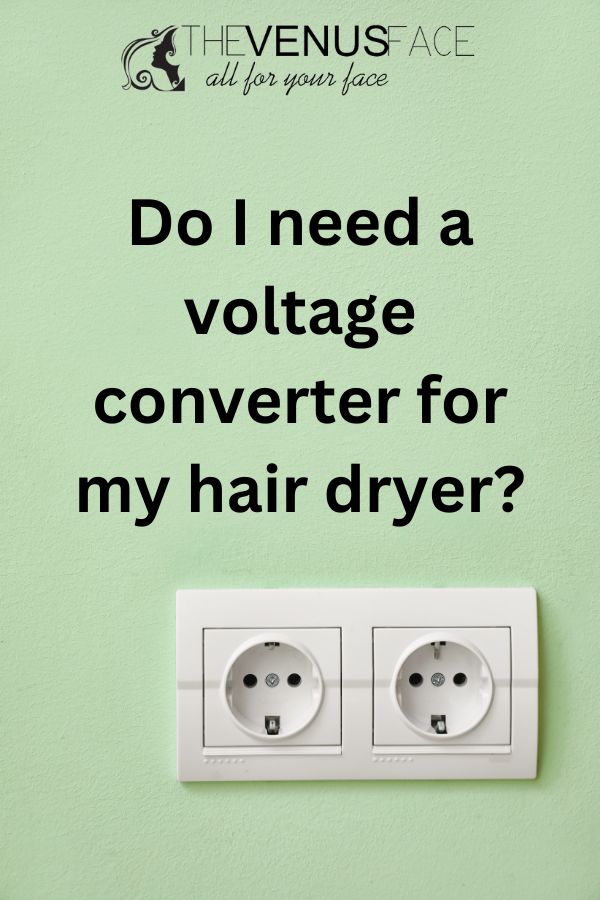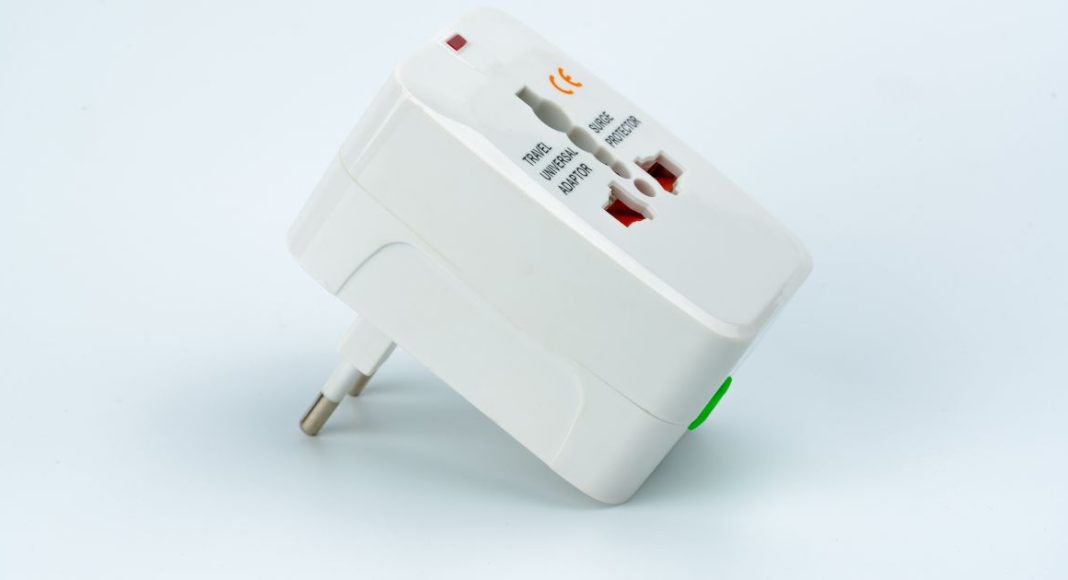Hair dryers are essential tools for many people’s daily beauty routines. Whether you’re at home or traveling abroad, it’s important to understand the compatibility of your hair dryer with different electrical systems. Voltage differences and plug types can cause problems if not properly addressed. In this article, we’ll explore whether you need a voltage converter for your hair dryer, and provide you with all the necessary information to make an informed decision.

Do I need a voltage converter for my hair dryer?
The voltage of a hair dryer is typically 120 volts. Therefore, if you are using your hair dryer in a region where the standard voltage is 120 volts, such as in the United States, you would not need a voltage converter. More: Will My Hair Dryer Work in the USA?
However, if you are planning to use your hair dryer in a region with a different standard voltage, such as in Europe where the standard voltage is 220-240 volts, you would need a voltage converter to match the voltage requirements of your hair dryer.
It’s important to note that some hair dryers are designed to be dual voltage, meaning they can work with both 120 volts and 220-240 volts. If your hair dryer is dual voltage, you would not need a voltage converter, but you would need to ensure that you have the appropriate plug adapter to fit the power outlets in the country you are visiting.
To determine whether your hair dryer is dual voltage or not, you can check the packaging or the description of the hair dryer. It should indicate the voltage specifications or mention if it is suitable for international use. If you’re unsure, it’s always recommended to consult the manufacturer or refer to the product manual for confirmation.
Using a hair dryer with the incorrect voltage can lead to damage or malfunction, so it’s essential to ensure compatibility or use a voltage converter when necessary.
Also, you don’t need voltage converters if you have battery-operated hair dryers.
What voltage should my hair dryer be on in Europe?
To determine the voltage setting for your hair dryer in Europe, you need to consider a few factors. Europe generally operates on a voltage of 220-240 volts. Here are the steps you can follow to ensure your hair dryer is compatible:
Check the label or manual of your hair dryer: Look for the voltage information on the label or in the user manual of your hair dryer. The label should indicate the voltage range that the hair dryer can support.
Verify if your hair dryer is dual voltage: Many modern hair dryers are designed to be dual voltage, which means they can operate on both 110-120 volts (common in North America) and 220-240 volts (common in Europe). Check if your hair dryer has an INPUT AC 120V – 240V label or a switch that allows you to toggle between voltage settings. If your hair dryer is dual voltage, you can use it in Europe without the need for a voltage converter.
Use a voltage converter if necessary: If your hair dryer is not dual voltage and only supports 120 volts, you will need a voltage converter to use it in Europe. A voltage converter will step up the European voltage of 220-240 volts to match the requirements of your hair dryer. Ensure that the wattage of your hair dryer falls within the acceptable range of the voltage converter you choose. It is important not to exceed the wattage limits of the converter to prevent overheating or damage.
Understanding Voltage and Plug Types
What is Voltage?
Voltage refers to the electrical potential difference between two points in an electrical circuit. Different countries have different standard voltages, with the most common being 110-120 volts (used in countries like the United States) and 220-240 volts (used in many other parts of the world). It’s essential to know the voltage rating of your hair dryer to ensure it is compatible with the electrical system of the country you’re in.
Plug Types and Electrical Standards
Apart from voltage differences, another challenge when using electrical devices internationally is plug types. Different countries have different plug configurations, and using a hair dryer with a plug that doesn’t fit the electrical outlet can be a problem. Common plug types include Type A, Type B, Type C, Type D, Type E, Type F, and Type G. It’s important to be aware of the plug type used in the country you’re visiting.
More: Can a Hair Dryer Trip an Arc Fault Breaker?
Dual Voltage Hair Dryers
What is a Dual Voltage Hair Dryer?
A dual-voltage hair dryer is designed to work with different voltage systems. It can operate at both 110-120 volts and 220-240 volts, making it versatile for international use. Dual-voltage hair dryers usually have a switch or an automatic mechanism to select the appropriate voltage.
Benefits of Dual Voltage Hair Dryers
Using a dual-voltage hair dryer eliminates the need for a voltage converter in most cases. These hair dryers can be used directly in countries with different voltage standards by simply switching the voltage setting. They are convenient for travelers who frequently visit different countries or for those planning to relocate.
Non-Dual Voltage Hair Dryers
Limitations of Non-Dual Voltage Hair Dryers
Non-dual voltage hair dryers are designed to work with a specific voltage, usually 110-120 volts or 220-240 volts. If you attempt to use a non-dual voltage hair dryer in a country with a different voltage standard, it may not function correctly or could even be damaged. Plugging a non-dual voltage hair dryer directly into an incompatible electrical outlet can lead to electrical malfunctions or even cause a fire.
Using Non-Dual Voltage Hair Dryers with a Converter
If you have a non-dual voltage hair dryer and plan to use it in a country with a different voltage standard, you will need a voltage converter. A voltage converter transforms the electrical voltage to match the requirements of your hair dryer. It allows you to use your hair dryer safely without worrying about damage or safety hazards.
More: Can You Plug a Hair Dryer Into an Extension Cord?
Checking Your Hair Dryer’s Voltage Compatibility
Before traveling internationally, it’s essential to check the voltage compatibility of your hair dryer. Most hair dryers have the voltage rating clearly indicated on their labels or on the device itself. If your hair dryer is a dual-voltage model, you can simply switch the voltage setting. However, if it’s a non-dual voltage model, you’ll need to consider using a voltage converter or other alternatives.
Traveling to Different Countries
Voltage Differences in Various Countries
Different countries have different voltage standards, which can range from 110-120 volts to 220-240 volts. It’s crucial to research the voltage used in the country you’re traveling to, as well as the plug type. This information will help you determine the compatibility of your hair dryer and decide whether you need a voltage converter or other alternatives.
Using a Voltage Converter when Traveling
If you plan to travel frequently to countries with different voltage standards, investing in a voltage converter is a wise decision. A voltage converter allows you to use your non-dual voltage hair dryer safely by adjusting the electrical voltage. It’s important to choose a high-quality voltage converter that matches the power requirements of your hair dryer.
More: Can You Put a Hair Dryer in Checked Luggage?
Considerations for Using Voltage Converters
Wattage and Power Consumption
When using a voltage converter, it’s crucial to consider the wattage and power consumption of your hair dryer. Voltage converters have specific wattage limits, and exceeding those limits can cause overheating or damage. Ensure that the wattage of your hair dryer falls within the acceptable range of the voltage converter you choose.
Types of Voltage Converters
There are two main types of voltage converters: step-up converters and step-down converters. Step-up converters increase the voltage, allowing you to use a 110-120-volt hair dryer in a 220-240-volt country. Step-down converters, on the other hand, decrease the voltage, enabling you to use a 220-240-volt hair dryer in a 110-120-volt country. Select the appropriate type of voltage converter based on the voltage compatibility of your hair dryer and the country you’re in.
Safety Precautions When using voltage converters, it’s important to observe certain safety precautions. Firstly, always ensure that the voltage converter you choose is of high quality and meets safety standards. Low-quality converters may pose a risk of electrical malfunctions or even cause electrical fires. Look for converters that are certified by reputable organizations and have built-in safety features such as surge protection and thermal overload protection.
Additionally, it’s crucial to use the voltage converter correctly. Follow the manufacturer’s instructions carefully and make sure all connections are secure. Avoid overloading the converter by using it for devices that exceed its wattage limits. Overloading can lead to overheating and potential damage to both the converter and your hair dryer.
Consider Travel Adapters
In some cases, you may not need a voltage converter at all. Many modern hair dryers are designed to be dual voltage, meaning they can automatically adjust to different voltage levels. Check the specifications of your hair dryer to see if it has this feature. If it does, all you need is a travel adapter to plug your hair dryer into the electrical outlets of different countries. Travel adapters do not convert voltage but simply adapt the plug shape to fit different outlet types.
References: https://www.energy.gov/oe/electricity-101


